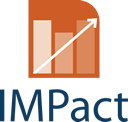Tools for price reduction mechanisms
As part of an intervention in the field of price reduction, the use of tools that give the user the ability to access PHS could be used to support the implementation of different types of measures . It is worth noting that such tools may be complementary and could be combined to establish PHS policies properly:
- Cash payments: Public authorities may grant some of their citizens (according to specific criteria: age, number of children, income, level of dependence, and so on) some money to access PHS (mostly care services). A tool of that type, used above all to transfer social subsidies, does not allow transparency in the final use of this form of welfare. Some barriers have therefore been identified, such as the lack of up-to-date and accurate information on the services provision available and the transfer of responsibility onto users, which challenge traditional service delivery mechanisms and professional expertise.
- In-kind benefits (or direct provision): Especially important in the case of PHS granted in the framework of long-term care, disability care and childcare public policies. This support can be used only for the provision of a specific type of service. Lately, in-kind benefits have been abandoned in favour of direct price reduction mechanisms in the interests of stimulating the provision of PHS and containing costs (less bureaucracy and outsourcing of the “transaction cost” that stems from the organisation of in-kind services).
- Voucher programmes: Vouchers (whether paper-based, on card or electronic) provide individuals with access to predetermined services. Recipients exchange vouchers at designated services providers that are then reimbursed through a simple process. They are alternatives to traditional in-kind or cash assistance. The creation of a general voucher system is particularly relevant for PHS, as it could render these activities more visible and make formal employment (and administrative duties) easier. These voucher systems fit with other types of measures that support policies, as they can be:
- Accessed directly by citizens;
- Distributed by employers;
- Distributed by public authorities.
The table below summarises the characteristics of the tools.
Table 5: Characteristics of the different types of tools
Given the characteristics listed above, it is important to highlight that these tools could be more or less suitable to the implementation of the price reduction measures available. The table below provides an overview of the tools’ suitability to the different price reduction measures.
Table 6: Suitability of the different type of tools to the measures
| Cash | Voucher | In-Kind | |
| Tax deduction | |
|
|
| Social subsidies | |
|
|
| Financial help from users’ employers | |
|
|
| Fostering/opening up competition | |
|
|






